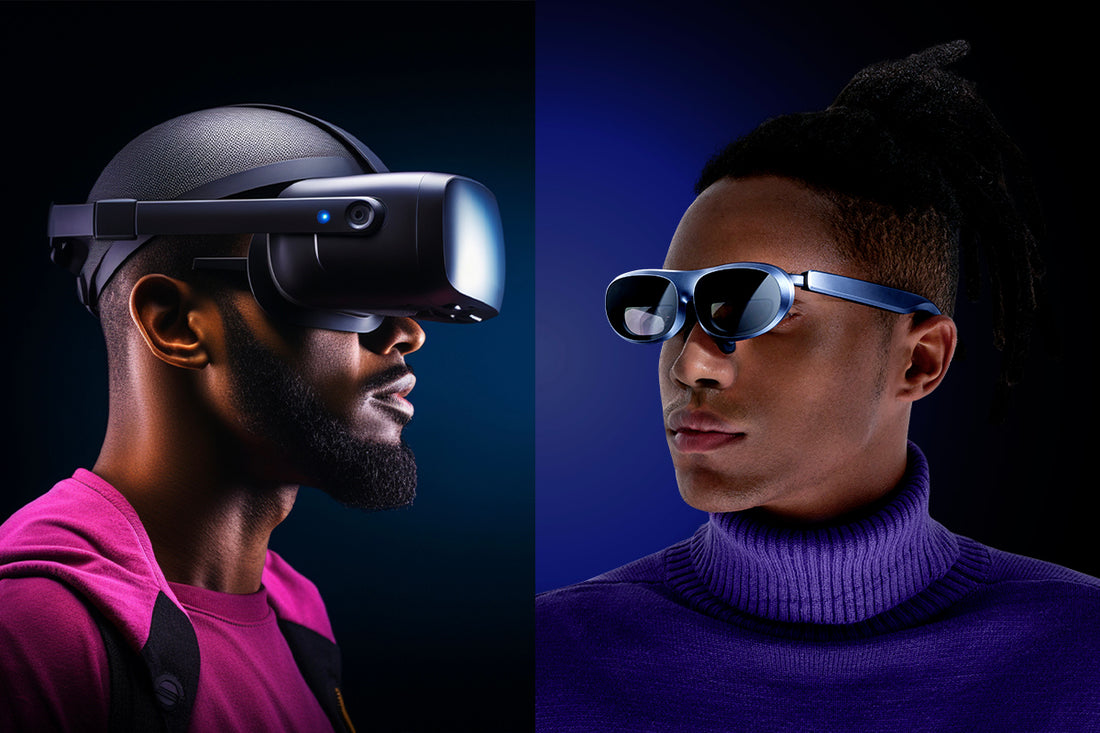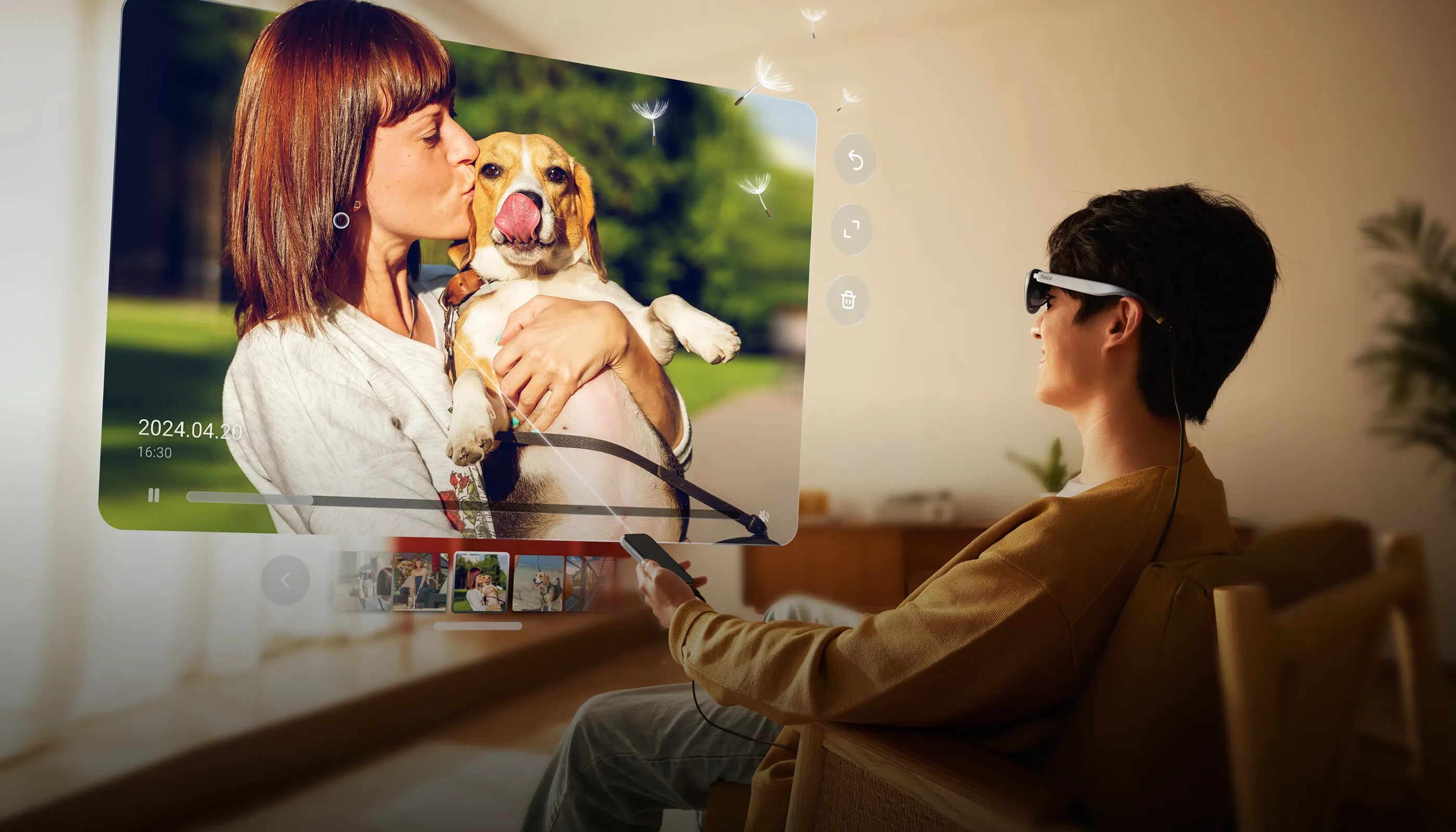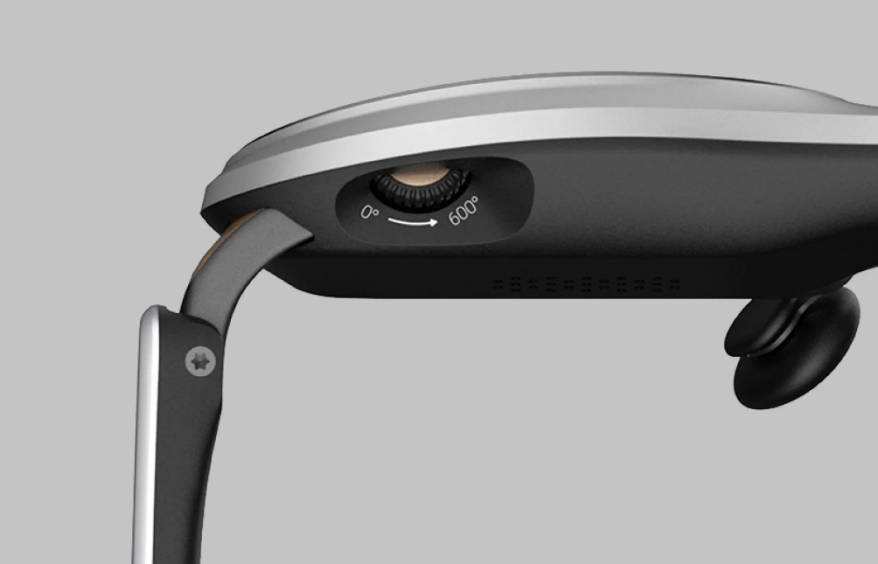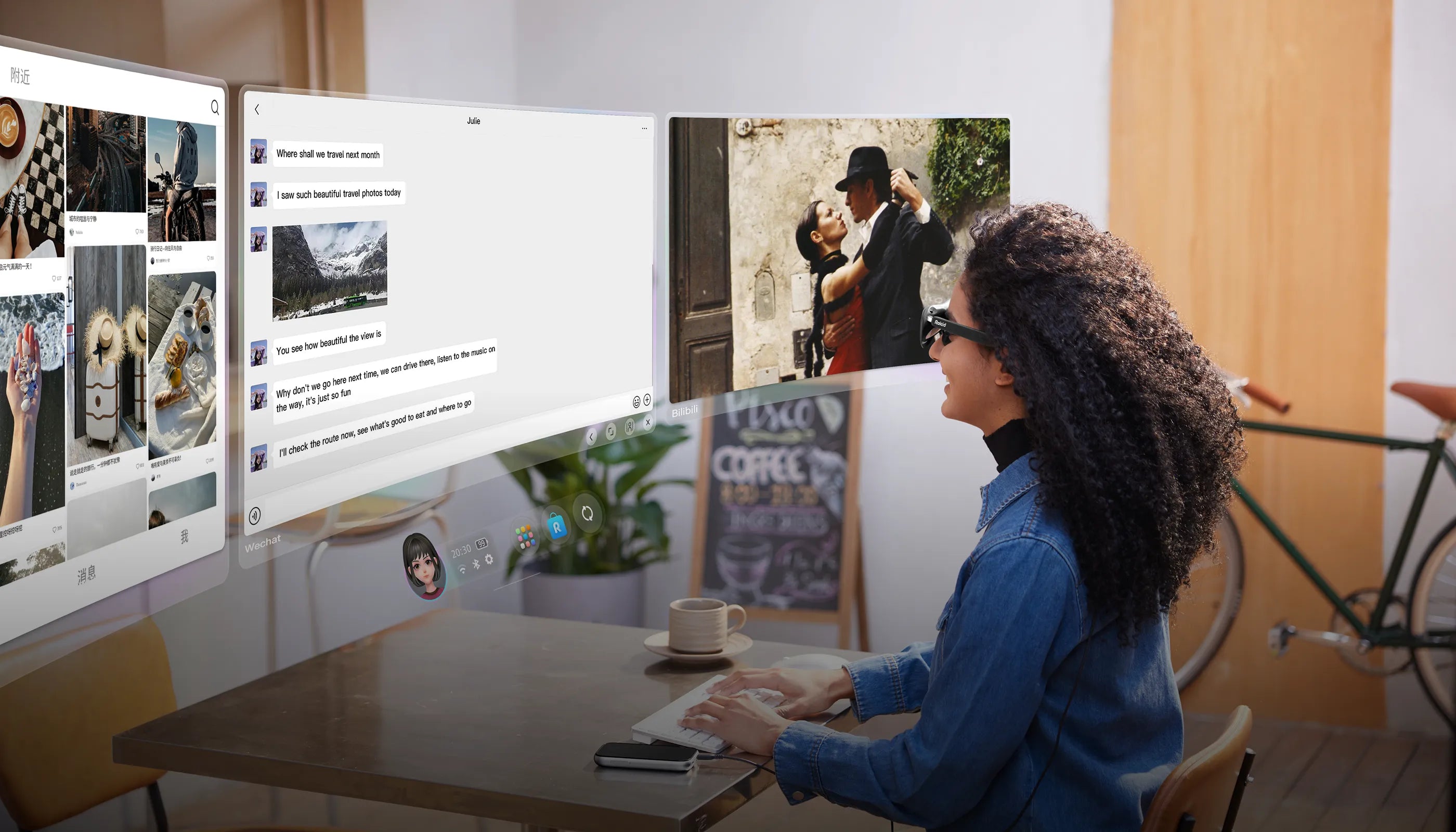
In today’s rapidly evolving technological landscape, two innovations that are making significant strides are AR (Augmented Reality) and VR (Virtual Reality) glasses. These devices represent the cutting edge of how we interact with digital environments, blending the lines between the physical and the virtual world in fascinating ways. Their increasing prominence in sectors like entertainment, education, and professional training highlights their growing importance. In this article, we'll delve into the intricacies of AR and VR glasses, exploring their functionalities, differences, and how they're reshaping our digital experiences.
Understanding AR Glasses
What are AR Glasses?
AR glasses are advanced wearable devices designed to enhance our perception of the real world by superimposing digital information — such as images, data, and animations — onto our natural environment. Unlike traditional computing devices, AR glasses offer a hands-free, interactive experience that integrates digital content into the user's physical surroundings. This means that while using AR glasses, one can see both the real world and digital overlays simultaneously.
Popular examples of AR glasses in the market showcase a range of functionalities and applications. The Microsoft HoloLens stands out for its diverse applications in fields such as medical training and architectural design, where its ability to overlay detailed digital imagery onto the real world proves invaluable. Google Glass is celebrated for its lightweight design and ease of use, making it a go-to choice for everyday tasks and casual use. Adding to this lineup is the Rokid Max, which has gained attention for its advanced features and versatility, further expanding the scope of what AR technology can accomplish in various professional and personal settings.

Key Features of AR Glasses
The unique features of AR glasses stem from their ability to overlay digital information onto the real world. This capability is achieved through sophisticated technology, including cameras, sensors, and display systems that work together to project images directly into the user's field of vision.
Overlaying Digital Information
One of the standout features of AR glasses is the ability to display digital information over your real-world view. This can range from simple text notifications to complex 3D models. For example, in a museum setting, AR glasses can display detailed information about artifacts when a visitor looks at them.
Real-World Interaction
AR glasses are designed to enhance and not replace the real world. They often include features like gesture recognition or voice control, enabling users to interact with both physical and digital elements seamlessly. This duality is what makes AR particularly useful in educational and professional settings.
Real-Life Applications and Use Cases
The practical applications of AR glasses are vast and diverse. In the medical field, they're used for advanced surgical procedures, allowing surgeons to access vital patient information without looking away from the patient. In retail, they can enhance the shopping experience by providing product information or virtual try-on options. In education, AR glasses offer immersive learning experiences, making complex subjects more accessible and engaging for students.
In industry, AR glasses have revolutionized maintenance and training processes. Technicians can receive real-time guidance and information while working on equipment, significantly reducing errors and improving efficiency.
The realm of AR glasses is expanding rapidly, with new uses emerging in various sectors, demonstrating their versatility and potential to transform how we interact with the world around us. As technology advances, we can expect AR glasses like video game glasses to become even more integrated into our daily lives, offering enhanced experiences and new ways of engaging with our environment.
Benefits of AR in Everyday Life
Augmented Reality (AR) glasses are increasingly becoming a part of our daily lives, transforming the way we interact with the world around us. In education, AR glasses offer an immersive learning experience, making complex subjects more tangible and engaging. Students can visualize historical events, scientific phenomena, and mathematical concepts in 3D, leading to a deeper understanding.
In the industry, AR glasses are revolutionizing manufacturing and maintenance processes. They provide workers with real-time data, schematics, and guidance, reducing errors and improving efficiency. For example, in automotive manufacturing, technicians can use AR glasses to access step-by-step assembly instructions while keeping their hands free for work.
Healthcare is another sector where AR glasses are making a significant impact. They assist in complex surgical procedures by overlaying critical information, such as patient vitals or 3D models of organs, directly into the surgeon's field of vision. This technology enhances precision and improves patient outcomes.
Exploring VR Glasses
What are VR Glasses?
Virtual Reality (VR) glasses are immersive devices that transport users to a completely digital environment. They encompass a range of systems, from simple headsets that work with smartphones to advanced systems with dedicated screens, sensors, and external tracking. VR glasses create a fully immersive experience, isolating the user from the physical world and placing them in a virtual one.
Leading VR glasses in the market include the Oculus Rift, known for its high-quality gaming experiences, and the HTC Vive, which offers room-scale tracking and motion controllers for a more interactive experience.
Key Features of VR Glasses
VR glasses are defined by their ability to create an entirely immersive digital environment. They achieve this through advanced display technology, motion tracking, and spatial audio. The result is a fully engaging experience that can transport the user to any place, real or imagined.
Gaming and Simulations
Gaming is one of the most popular applications of VR glasses. They provide a level of immersion that traditional gaming systems cannot match, allowing players to truly step inside the game world. Beyond entertainment, VR is also used for simulations in fields like aviation, where pilots can train in a safe and controlled virtual environment.
Training Applications
VR glasses are increasingly used for training purposes in various industries. They offer a risk-free environment for practicing skills ranging from medical procedures to heavy equipment operation. This not only enhances learning but also ensures safety during training.
The Impact of VR on Entertainment and Beyond
VR technology is reshaping the entertainment industry by providing a new way to experience content. From immersive films and concerts to virtual theme parks, VR is opening up new possibilities for creators and audiences alike. However, its impact goes beyond entertainment. VR is being used for therapeutic purposes, such as treating PTSD, and in real estate, where potential buyers can take virtual tours of properties.

AR vs VR: A Comparative Analysis
Differences in Technology
The primary technological difference between AR and VR glasses lies in their approach to reality. AR glasses enhance the real world with digital information, while VR glasses create a completely virtual environment. This difference is reflected in their hardware design and user interface. AR glasses are typically lighter and more transparent, allowing users to see the world around them. In contrast, VR glasses are bulkier, encompassing the eyes to block out the external environment.
User Experience and Interaction
The user experience in AR and VR varies significantly. AR glasses allow for interaction with both real and virtual elements, making them ideal for applications where the user needs to remain aware of their surroundings. VR glasses, on the other hand, focus on interaction within a virtual environment, providing a more immersive but isolated experience.
Applications and Use Cases
AR and VR have diverse applications across various sectors. AR's ability to overlay digital information on the real world makes it suitable for educational, industrial, and healthcare applications. VR's immersive nature is ideal for gaming, simulations, and training scenarios.
The Future of AR and VR Technology
Innovations on the Horizon
The future of AR and VR technology is brimming with potential. Upcoming advancements are expected to improve the portability, functionality, and accessibility of these devices. We might see AR glasses like android glasses becoming as common as smartphones, and VR technology becoming more affordable and widespread.
Challenges and Considerations
Despite the promising future, there are challenges and considerations in AR and VR development. These include technical limitations, such as battery life and display resolution, and broader concerns like user privacy and ethical implications of immersive technologies.
Conclusion
In conclusion, AR and VR glasses offer distinct experiences and have unique potentials. While AR enhances our reality, VR transports us to new ones. Both technologies are shaping the future in significant ways, and their evolution will undoubtedly continue to impact various aspects of our lives.
Frequently Asked Questions
Are Augmented Reality Glasses Worth It?
Yes, for applications in education, industry, and healthcare, AR glasses offer significant benefits.
Is VR Better than AR?
This depends on the application. VR is better for immersive experiences, while AR is more suitable for interactive real-world enhancements.
What are the Disadvantages of VR Glasses?
The main disadvantages include isolation from the real world, potential motion sickness, and the need for substantial computing power.
Why is AR More Popular than VR?
AR's popularity stems from its broader range of practical applications and its ability to blend digital and real-world experiences.



